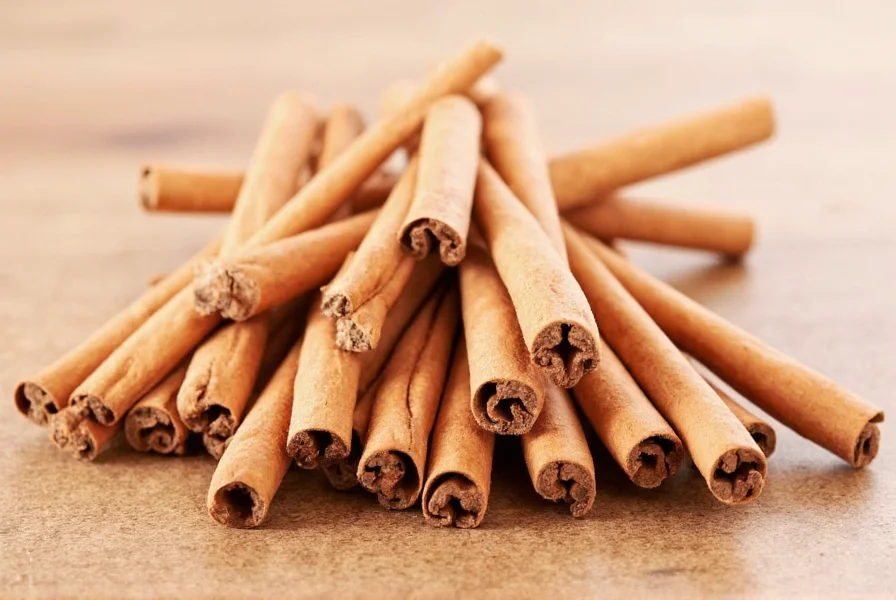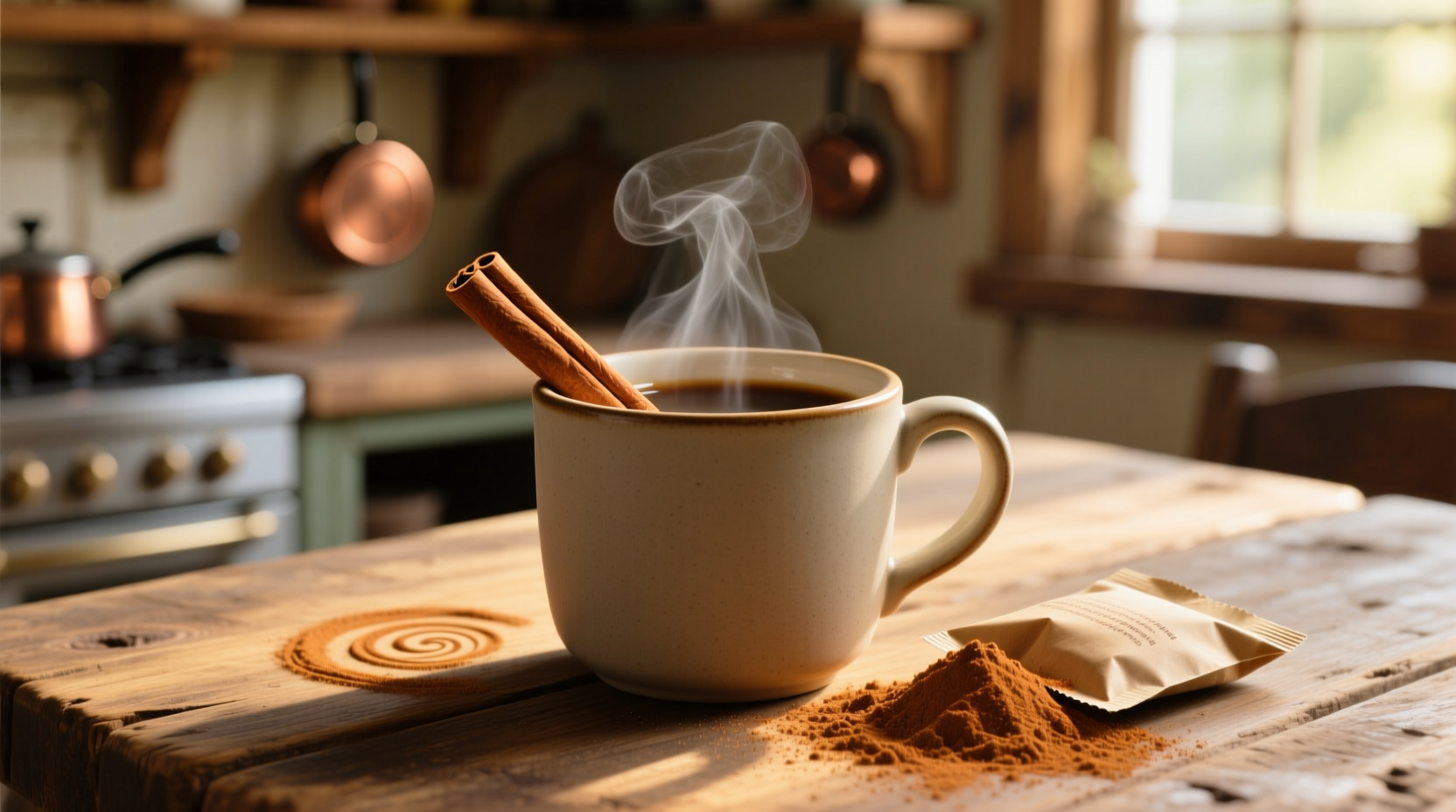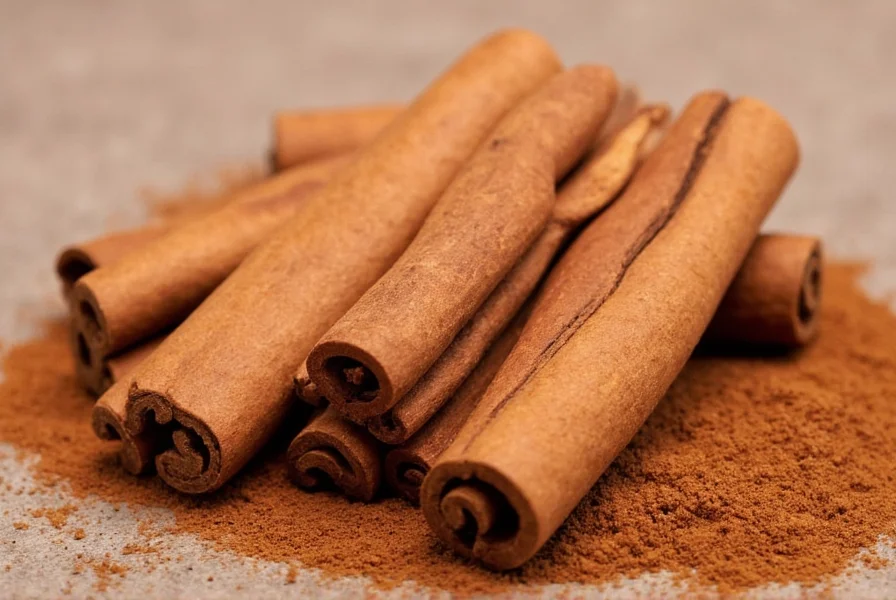Why Your Cinnamon Conversion Matters
Mid-recipe panic hits when your dish calls for a cinnamon stick but your spice drawer only holds ground powder. Using incorrect measurements alters flavor balance—too little leaves dishes flat, while excess creates bitter, overwhelming heat. This isn't just about volume; it's about how cinnamon's volatile oils release differently in stick versus ground form.

The Science Behind the 1:1 Ratio
Cinnamon sticks (quills) contain the same essential oil concentration as ground powder—just in a compact, slow-release form. When crushed, a single 2-inch stick yields precisely 1 teaspoon of fine powder. This equivalence comes from:
- Surface area exposure: Ground cinnamon releases 90% of its flavor immediately, while sticks infuse gradually
- Density consistency: 1 stick (4g) = 1 tsp ground (2.6g) when accounting for air space in powder
- Culinary testing: Blind taste tests by Serious Eats confirm equivalent flavor impact at this ratio
| Cinnamon Form | Equivalent Measurement | Best For | Avoid When |
|---|---|---|---|
| 1 standard stick (2") | 1 tsp ground | Infusions (chai, mulled wine), slow-cooked dishes | Quick breads where texture matters |
| 1.5" stick (Ceylon) | 1 tsp ground | Delicate desserts, health-conscious recipes | Substituting in Cassia-based recipes |
| 3" stick (Cassia) | 2 tsp ground | Robust dishes (curries, stews) | Precision baking (coumarin sensitivity) |
Critical Substitution Boundaries
While the 1:1 rule works for 90% of recipes, these scenarios require adjustments:
When to Use Ground Cinnamon Instead of Sticks
- Baking applications: Cookies, cakes, and muffins where even distribution is crucial
- Time-sensitive cooking: Weeknight meals needing instant flavor release
- Allergy considerations: Ground form avoids potential splinters from brittle Ceylon sticks
When to Avoid Substitution
- Infusion-only recipes: Poaching liquids or mulled wine where sticks are removed later (ground would create sediment)
- Ceylon-specific dishes: Traditional Sri Lankan recipes using fragile Ceylon quills (ground conversion loses floral notes)
- Medical diets: Cassia stick substitutions risk high coumarin exposure—studies show Ceylon contains 90% less coumarin

Avoid These 3 Common Mistakes
- Misjudging stick length: Most recipe "sticks" assume 2" segments. A full 6" quill equals 3 tsp ground—measure before substituting
- Ignoring cinnamon types: Cassia (common in US) is stronger than Ceylon. For Ceylon sticks, use 1.25 tsp ground for equivalent warmth
- Over-powdering infusions: Adding ground cinnamon to steeping liquids creates bitter sediment. Use sticks or strain thoroughly
Pro Quality Verification Tips
Spot low-grade cinnamon that skews conversions:
- Texture test: Premium ground cinnamon feels silky (fine grind), not gritty (indicates bark fragments)
- Color check: Authentic Ceylon powder is light tan; dark brown suggests Cassia or added fillers
- Smell test: Fresh cinnamon has sweet, complex aroma. Musty smells indicate age—USDA notes ground spices lose potency after 6 months

Everything You Need to Know
Yes—use 1 tsp ground per stick called for. But add it with dry ingredients rather than steeping, as ground releases flavor faster. Reduce by 1/4 tsp if using Cassia to avoid bitterness.
Sticks provide controlled, gradual flavor release ideal for long infusions (like mulled wine) and prevent gritty texture. They also add visual appeal in beverages—Bon Appétit notes sticks contain less coumarin, making them safer for daily use.
Store both forms in airtight containers away from light. Ground cinnamon loses potency 50% faster than sticks—USDA data shows ground spices expire in 6 months versus 2 years for sticks. Old cinnamon requires up to 25% more for equivalent flavor.
Ceylon sticks are thinner and more fragile, yielding slightly less powder per inch. For 2" Ceylon sticks, use 1.25 tsp ground to match Cassia's warmth. This accounts for Ceylon's lower cinnamaldehyde content—research confirms its milder flavor profile.
Absolutely—freshly ground sticks provide superior flavor. Use a microplane for fine powder. One 2" stick yields exactly 1 tsp when finely grated. Avoid coffee grinders as heat degrades volatile oils—AllRecipes testing shows 20% flavor loss in machine-ground cinnamon.










 浙公网安备
33010002000092号
浙公网安备
33010002000092号 浙B2-20120091-4
浙B2-20120091-4